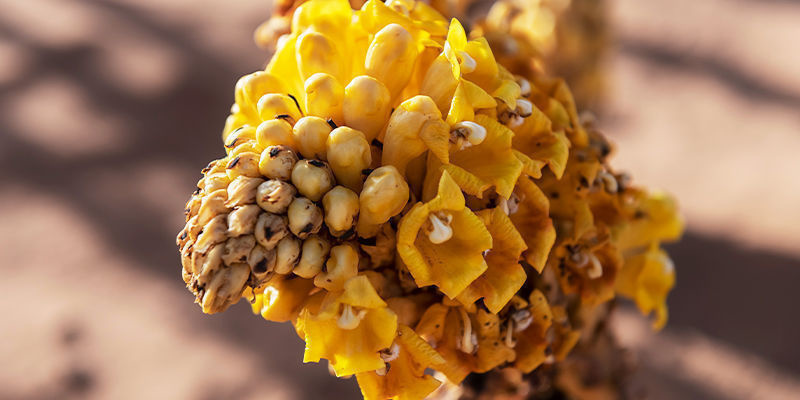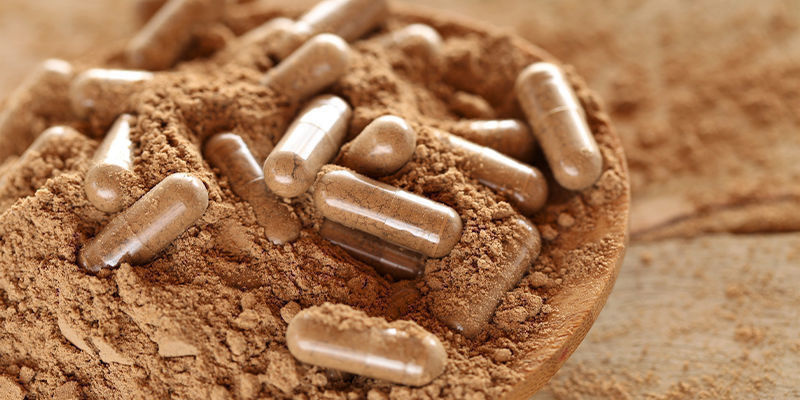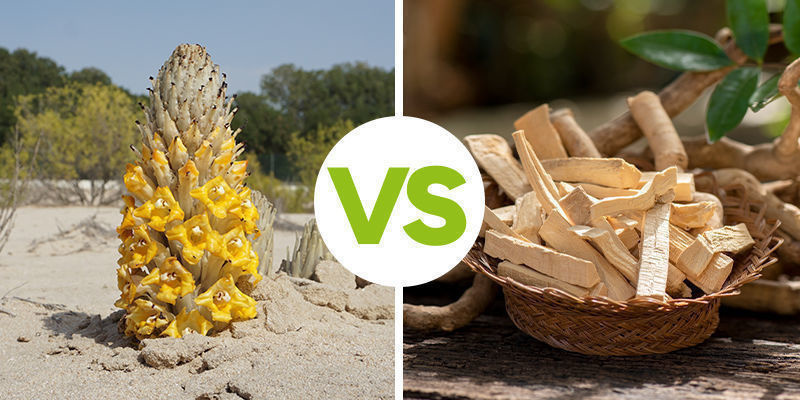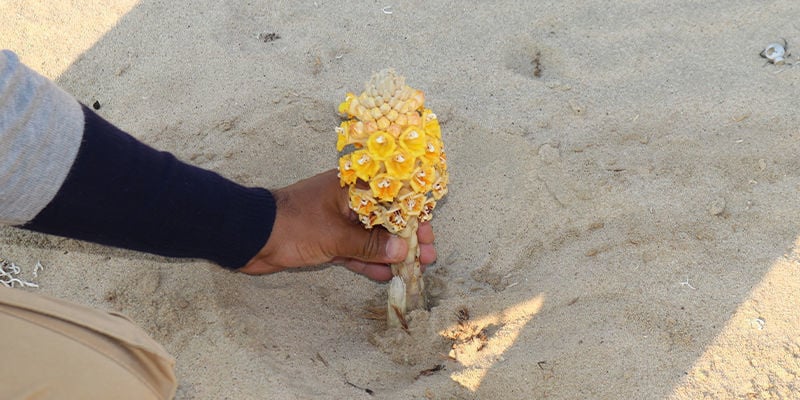
What You Need To Know About Cistanche Tubulosa
Cistanche tubulosa is a plant that most people, at least in Europe, haven't heard of. Used in traditional Chinese wellness practices for generations, here we ask how it may be used to boost well-being in the modern day.
Cistanche tubulosa, often referred to as the "ginseng of the desert", is a fascinating plant with a rich history and a wide array of potential benefits. This succulent herb has been used for centuries in traditional holistic practices in East Asia, and contemporary research is beginning to unveil that this usage was by no means unwarranted.
In this article, we'll explore what Cistanche Tubulosa is, how it may affect the body, and how you can use it to benefit your own well-being.
What is Cistanche tubulosa?

Cistanche tubulosa is a perennial plant native to the Taklamakan desert of northwest China. It belongs to the Orobanchaceae family and is a parasitic, or heterotrophic, plant, drawing nutrients from the roots of host plants, as it is unable to produce its own. Recognisable by its vibrant yellow flowers that grow upwards in an erect conical shape, Cistanche tubulosa thrives in harsh, arid environments where few other plants can even survive.
Traditionally, Cistanche tubulosa has been used in Chinese wellness practices for its supposed anti-ageing, vitality-boosting, and aphrodisiac properties. The plant is often dried and ground into powder, which can then be consumed in various forms.
What does Cistanche tubulosa do to your body?

It remains unclear exactly what Cistanche tubulosa can do when ingested, although traditional use and modern research give us some clues as to what its potential effects may be.
1. Antioxidant properties
A 2023 pharmacological review suggests Cistanche tubulosa may be able to play a role as an antioxidant (Zhou et al.). The researchers observed that, under their conditions, the herb was able to promote healthy cellular functions, particularly in mitochondria, by encouraging the body’s natural production of antioxidants such as glutathione.
Antioxidants are molecules that prevent the oxidation of other molecules, which can have wide-ranging health benefits.
2. Immune system support and anti-inflammatory potential
Due to its potential antioxidant properties, Cistanche tubulosa is thought to potentially boost immune function too. Antioxidants help to remove free radicals from the body, which are molecules that cause cellular damage. By helping to reduce their levels, it is suspected that Cistanche tubulosa could assist immunity.
In a similar vein, Cistanche tubulosa is being studied for its potential to reduce inflammation. Once again, researchers are crediting Cistanche tubulosa’s high antioxidant content, as these molecules are known to be effective at fighting inflammation.
3. Anti-ageing properties

The glycosides in Cistanche tubulosa are believed to have properties that may delay signs of ageing and support cognitive health through their antioxidant effects and potential to improve blood flow (Wang et al., 2017). Although, don’t fool yourself, nothing can stop the inevitable march of time.
It’s also possible that Cistanche tubulosa may help the brain by promoting levels of brain-derived neurotrophic factor (BDNF). BDNF is a protein that supports the health and communication of nerve cells, which are crucial for learning and memory, and could therefore slow cognitive decline.
4. Energy and mood enhancement
Cistanche tubulosa is reported by some users (stretching back millennia) to provide a steady supply of energy throughout the day. Crucially, this energy is said to come without the jitters commonly associated with caffeine, making it more comfortable for some users. It may help to improve alertness, focus, and overall vitality, contributing to a better overall mood and the ability to enjoy daily activities more fully. Furthermore, some anecdotal accounts claim Cistanche tubulosa may support greater endurance when exercising, though this has not been confirmed by science.
5. Sexual health and libido
Traditionally used as an aphrodisiac, Cistanche tubulosa has been used to support sexual health and performance. However, it is unclear how effective it is for these purposes. Some studies indicate it may help to enhance libido and support reproductive health in both men and women. The key components, echinacoside and acteoside, are thought to play a role in this by promoting healthy hormone levels (Kong et al. 2018). However, more research is necessary to ascertain if and how individuals might be able to harness this effect.
How to use Cistanche tubulosa

Cistanche tubulosa is, these days, most commonly taken as a supplement in the form of capsules, powders, and extracts. However, traditionally, this herb was dried and ground into a fine powder and then brewed into a tea. So it can also be taken this way if you can get hold of the fresh or dry specimen.
Cistanche tubulosa vs tongkat ali

Cistanche tubulosa and tongkat ali bear some similarities and might be used for similar ends. However, there are distinct differences between the two as well. Here’s a brief overview to help you figure out which might be better for you.
Similarities:
- Both herbs are known to affect hormone levels in both men and women.
- Both tongkat ali and Cistanche tubulosa are thought to affect brain health.
Differences:
- Tongkat ali is particularly effective in changing mood and mental health, especially for those dealing with high stress and anxiety. Cistanche, on the other hand, is noted for preserving brain function over the long term.
- Tongkat ali has a stimulating effect, enhancing physical performance and energy levels. Conversely, Cistanche tubulosa works more slowly, promoting energy restoration and bodily balance without immediate stimulation.
How effective is Cistanche tubulosa?

The effectiveness of Cistanche tubulosa can vary from person to person, so you should always reserve judgement before trying it out yourself. Many users report increased energy levels, improved endurance, and better overall health, but many do not. Scientific research is still ongoing, and while early results are promising, more extensive studies are needed to fully understand its range of benefits and potential side effects.
- Kong, Zwe-Ling, Johnson, Athira, Ko, Fan-Chi, He, Jia-Ling, Cheng, & Shu-Chun. (2018, October). Effect of Cistanche Tubulosa Extracts on Male Reproductive Function in Streptozotocin–Nicotinamide-Induced Diabetic Rats - https://www.mdpi.com
- Ningqun Wang, Shaozhen Ji, Hao Zhang, Shanshan Mei, Lumin Qiao, & Xianglan Jin. (2017, December). Herba Cistanches: Anti-aging - https://www.ncbi.nlm.nih.gov
- Zhou, Shiqi, Feng, Duo, Zhou, Yaxi, Duan, Hao, Jiang, Yongjun, Yan, & Wenjie. (2023/03/03). Analysis of the active ingredients and health applications of cistanche - https://www.frontiersin.org
-
 3 min
July 18, 2023
Psyllium Husk: The Superfood You've Been Missing Out On
There's a reason psyllium husk is on the lips of many health-conscious consumers. Derived from the Plantago ovata plant, psyllium promotes regular bowel movements, eases constipation, and may...
3 min
July 18, 2023
Psyllium Husk: The Superfood You've Been Missing Out On
There's a reason psyllium husk is on the lips of many health-conscious consumers. Derived from the Plantago ovata plant, psyllium promotes regular bowel movements, eases constipation, and may...
-
 6 min
July 4, 2023
Top 10 Rare Superfoods To Boost Well-Being
Looking to take your healthy diet and lifestyle to the next level? Superfoods are packed with nutrients, vitamins, and minerals, and can help make an already healthy routine even better. Keep...
6 min
July 4, 2023
Top 10 Rare Superfoods To Boost Well-Being
Looking to take your healthy diet and lifestyle to the next level? Superfoods are packed with nutrients, vitamins, and minerals, and can help make an already healthy routine even better. Keep...
-
 4 min
July 3, 2023
Discover Top 10 Mushrooms For Your Health
With so many varieties of mushrooms available, there's plenty that our funghi friends offer in terms of potential health and well-being benefits for users. What's more is that these mushroom...
4 min
July 3, 2023
Discover Top 10 Mushrooms For Your Health
With so many varieties of mushrooms available, there's plenty that our funghi friends offer in terms of potential health and well-being benefits for users. What's more is that these mushroom...
-
 6 min
March 31, 2023
Feel-Good Hormones: How They Affect Your Well-Being
Ever thought about what makes you feel good? Did you know that a series of hormones are influencing your mood even as you read this? Read on to find out all you need to know about feel-good...
6 min
March 31, 2023
Feel-Good Hormones: How They Affect Your Well-Being
Ever thought about what makes you feel good? Did you know that a series of hormones are influencing your mood even as you read this? Read on to find out all you need to know about feel-good...











 United States
United States








